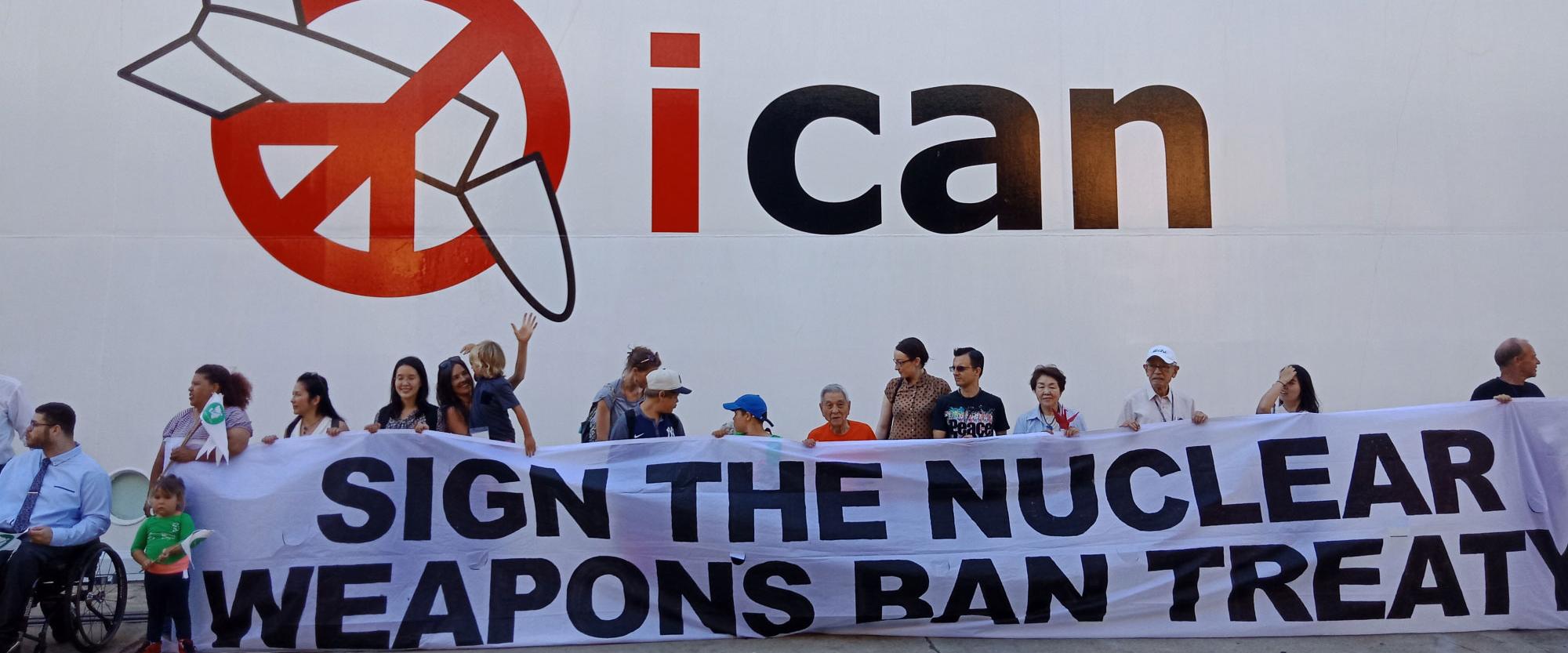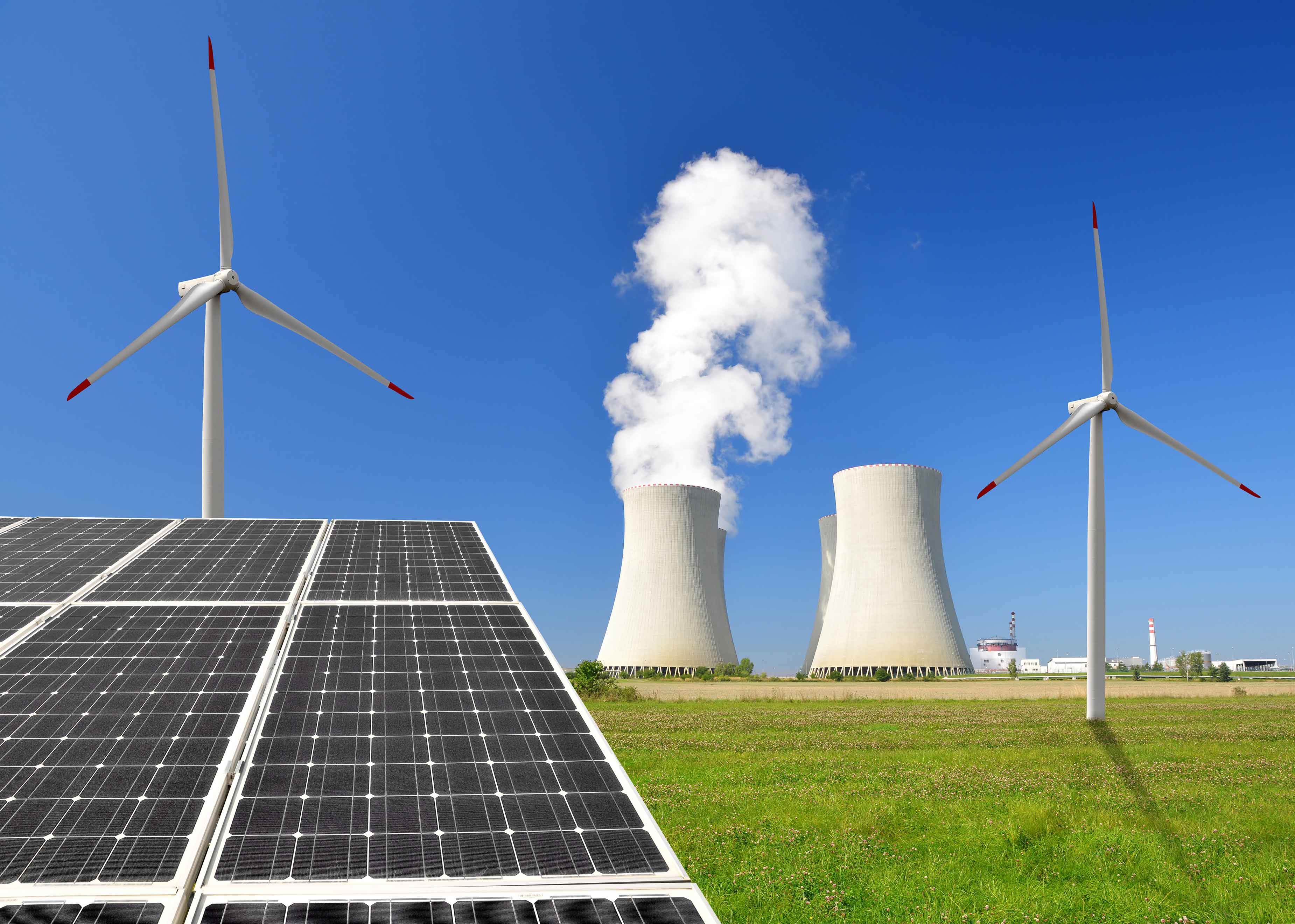
Nuclear Weapons Pose the Greatest
Acute Danger to Earth’s Climate
Gem Romuld / International Campaign to Abolish Nuclear Weapons, Australia
(November 5, 2024) — ICAN Australia is pleased to release a new 20-page report today on the intersections between climate chaos and nuclear weapons, and why nuclear disarmament is climate action! It is authored by ICAN co-founder Tilman Ruff, and comes ahead of the global COP29 meeting.
The report’s key findings are:
- Smoke from burning cities ignited by a nuclear war involving 2% of the global arsenal would suddenly plummet temperatures worldwide to ice age levels, decimate agriculture, disrupt ocean food chains and starve to death over two billion people.
- Militaries are large and mostly unconstrained greenhouse gas emitters. Growing conflicts and nuclear threats undermine international cooperation needed to address the climate crisis. Rising military spending and nuclear arsenals have huge opportunity costs and make conflicts more dangerous. An increased risk of war leading to nuclear escalation is the greatest danger of the climate crisis.
- Nuclear power inseparably creates the capacity to build nuclear weapons. In most nuclear-armed states, the infrastructure, personnel, expertise, industrial capacity and government investments in nuclear power are also key to their nuclear weapons programs.
- Nuclear reactors, spent fuel storage ponds and reprocessing plants are effectively pre-positioned large radiological weapons, vulnerable to direct attack or disruption of power and water for essential cooling. Russia’s invasion of Ukraine has seen, for the first time, multiple nuclear power plants attacked and weaponised in war, risking a radiological disaster.
We hope you will find it useful in your campaigning!
READ IT HERE

TABLE OF CONTENTS
SUMMARY
- Introduction
- Nuclear weapons pose the greatest acute danger to Earth’s climate
- A climate-stressed and conflict-ridden world is an even more dangerous place for nuclear weapons
- Nuclear power fuels nuclear proliferation
4.1 Nuclear reactors create enormous radiological hazards
4.2 Russia’s invasion of Ukraine and weaponisation of nuclear facilities
- Opportunity costs of nuclear weapons for climate action
CONCLUSION
SUMMARY
Nuclear weapons and climate are deeply interconnected. The hospitable and stable climate required for human and biosphere health needs protecting from both rampant global heating and nuclear war. The smoke from burning cities ignited by even a nuclear war involving 2% of the global nuclear arsenal would suddenly plummet temperatures worldwide to ice age levels, decimate agriculture, disrupt ocean food chains and condemn over two billion people to starve to death.
A climate-stressed world is an even more dangerous place for nuclear weapons. Over the last decade, the number of armed conflicts and their casualties have steadily grown, exacerbated by food and water insecurity, worsening poverty, extreme climate events, displacement and other consequences of global heating. These conflicts and the use of nuclear weapons to assert political and military power with claimed impunity undermine the international cooperation needed to address the climate crisis and other shared challenges.
Nuclear arsenals and growing military expenditures not only make conflicts more dangerous and deadly, but have huge opportunity costs, as vast resources are diverted from addressing the real needs of people and planet. Military organisations and activities are also large emitters of greenhouse gases, rarely measured or reported and largely unconstrained.
Apart from being slow, now the most expensive energy source, associated with risks of catastrophic accidents, routine radioactive emissions and intractable waste, nuclear power inseparably creates the capacity to build nuclear weapons. Its promotion as a somewhat low carbon energy source is largely by vested interests and for political and potential proliferation purposes. Facilities to enrich uranium for nuclear reactors can readily enrich it to weapons grade, and the plutonium inevitably produced from uranium inside a nuclear reactor can be extracted from the spent fuel rods.
Both routes have been used for proliferation of nuclear weapons. In most nuclear-armed states, the infrastructure, personnel, expertise, industrial capacity and government investments in nuclear power are also key to their nuclear weapons programs.

Nuclear facilities including reactors, spent-fuel storage ponds and reprocessing plants contain vast amounts of long-lived radioactive materials. They are effectively pre-positioned large radiological weapons or ‘dirty bombs’, vulnerable to direct military attack or disruption to electricity and water supplies essential for continuous cooling.
Russia’s invasion of Ukraine has starkly highlighted the dangers of a radiological disaster from nuclear facilities in a war zone, particularly with military attacks on, occupation and weaponisation of the Zaporizhzhia Nuclear Power Plant and destruction of the Kakhovka Dam which provided cooling water.
A healthy and sustainable future for all life on Earth requires rapid transition to renewable energy and net zero greenhouse gas emissions, and that we prohibit and eliminate nuclear weapons before they eliminate us. Virtually every species will be harmed in a nuclear war and by global heating; only one species can stop them.

INTRODUCTION
Have nuclear weapons and climate change got anything to do with each other? Does climate change increase the risk of nuclear war?
What effect would nuclear war have on the climate? How does nuclear power generation – sometimes touted as a climate-friendly energy source – relate to nuclear risks? Could the massive amounts of radioactivity inside nuclear reactors and waste storages cause radioactive contamination akin to nuclear weapons? Could nuclear facilities themselves be turned into weapons? This briefing paper addresses the connections between our climate, nuclear weapons, nuclear power and the stuff that puts the ‘nuclear’ in nuclear weapons.
THE BOTTOM LINE
The two paramount human-made existential threats we confront — nuclear weapons and climate change — exacerbate each other and need to be addressed together, with utmost urgency. One harms us and our biosphere every day, the other could deplete it irrevocably and end human civilisation and many species in less than a day.